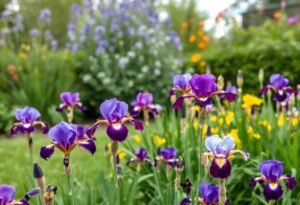Why Deadheading Matters for Pansies
Every gardener understands the importance of keeping plants looking beautiful and lively. Deadheading is a crucial practice for pansies, as it helps conserve the plant’s energy. By removing spent blooms, you stop the plant from putting resources into seed production, which can lead to decreased flowering. When you deadhead, you encourage the pansy to produce more vibrant and fresh blooms, enhancing both its beauty and longevity.
The Right Technique for Deadheading Pansies
Deadheading pansies is a straightforward process, but it requires attention to detail. The best method is to pinch the flower just below its base and gently twist it off along with a bit of the stem. This ensures the plant can focus its energy on creating new blossoms. If you prefer using tools, make sure your shears are clean and disinfected to prevent disease spread among your plants.
When to Deadhead Your Pansies
Timing is essential when it comes to deadheading pansies. Make it a habit to check your plants daily, and remove spent blooms as soon as you notice them wilting or turning brown. A regular deadheading schedule will maximize your pansy’s chances of blooming continuously. The earlier you act, the deeper the reward in terms of garden aesthetics!
The Benefits of Regular Deadheading
Regularly removing spent flowers comes with numerous benefits. Not only will it keep your garden looking lovely, but it also encourages new blossom growth. Healthy pansies will reward you with a longer and more colorful flowering period, making your garden a vibrant delight throughout the summer. Additionally, this practice helps prevent diseases that may latch onto dying parts of the plant, promoting overall health.
How Often Should You Deadhead?
Aim to deadhead your pansies at least once a week. You can adjust this frequency based on weather conditions and the growth rate of your plants. In warmer months, when pansies tend to thrive, you may need to dedicate more time to this task. Your dedication will yield noticeable results!
Fertilizing After Deadheading
After you’ve deadheaded your pansies, consider fertilizing them as well. Using a balanced fertilizer can help your plants channel their energy into producing new blooms. Look for a fertilizer designed to support flowering, and your pansies will flourish, gifting you with stunning displays all season long!
Conclusion
Pansies are not just beautiful additions to your garden; their proper care can make all the difference. Deadheading is a vital step that every gardener should know. Don’t delay removing spent blooms, and watch as your garden comes to life. Taking a moment to nurture your pansies will ensure their beauty endures throughout the summer months!

















